|

Torrent Description
2014.05.11
Vanjara (1954) Punjabi_Xvid_No Subs_Indian Cinema_The Golden Years_Classic [DDR] CAST:- Manju, Amarnath, Sunder, Khairati, Rajni, Renu Maker, Chand Burque, Satish Batra, Ramesh Thakur, Sohan Punditji, Dev Kishan, Kamaldeep, Junior Mehmood Director: Majnu Producer: Shaminder Chahal Music Director: Sardul Kwatra Lyrics: Varma Malik, Sehrai Playback Singers: Lata, Shamshad Begum, Shaminder Songs are included in MP3s Vanjara (1954) 00. Title Music and Screen Credits, Sardul Kwatra Vanjara (1954) 01. Peengan De Utteh Beh Ke, Lata Mangeshkar, Varma Malik, Sardul Kwatra Vanjara (1954) 02. Dholia tu dil kho lia teri rawangi main ho ke, Lata, Shaminder, Varma Malik-Sehrai, Sardul Kwatra Vanjara (1954) 03. Pipalaan di Thandi Chchan Ve, Lata, Varma Malik-Sehrai, Sardul Kwatra Vanjara (1954) 04. Duniya de sare dukh, Shamshad Begum, Varma Malik-Sehrai, Sardul Kwatra Vanjara (1954) 05. Charkhe Diyan Kookan Ne, Lata, Shaminder, Varma Malik-Sehrai, Sardul Kwatra Vanjara (1954) 06. Main Te San Maluk Jahi Jat Palley Pae Gia, Shamshad Begum, Varma Malik-Sehrai, Sardul Kwatra Vanjara (1954) 07. Sade Pind Vich Pa Ke Hatti, Lata Mangeshkar, Varma Malik-Sehrai, Sardul Kwatra Vanjara (1954) 08. Jag jani battiye, Lata Mangeshkar, Varma Malik-Sehrai, Sardul Kwatra PROFILE:- Shamshad Begum: The singing sensation from Amritsar Mohammad Rafi used to say that Shamshad Begum is the most selfless play-back singer of India. Mohammad Rafi himself was extremely selfless. He never hackled for singing assignments and remuneration with his producers and musuc directors. Since both were born, within a span of five years, in one or the other part of Amritsar district, the city and the district of the great “Gurus” imparted the quality of “Sewa” and selfness to both stalwarts of the music. Close to the age of ninety years, Shamshad Begum keeps meditating for all the blessings she had in life. She has never grumbled about what she got and what she did not. She even praises those youngsters, who are senselessly remixing her vintage melodies. THOSE born before or after 1947 have grown up with the songs recorded in the voices of Shamshad Begum and Surinder Kaur. If Surinder Kaur was the leading most folk and country singer of Punjab, Shamshad Begum was the leading most playback singer of the state. Both have contributed immensely to the culture of Punjab and our heads bow in reverence before both these folk heroines. Shamshad Begum was born in the walled city of Amritsar round about in 1920. Being bestowed with a sweet, crisp and deep voice, Shamshad Begum became very popular at a young age in her home town. She was not even fifteen years old, when the people started inviting her as a folk singer during family occasions like weddings, betrothals, birthdays and festivals. Lahore being very close to Amritsar, her fame spread to the “Mohallas” (neighbourhoods) of Lahore too. All India Radio Lahore opened a modern studio in 1937. This new radio outlet needed staff artists for various fields like drama, news reading, talks and different categories of music. Who could be better for Punjabi folk music than Shamshad Begum of amritsar? On receiving an invitation from All India Radio Lahore, Shamshad Begum appeared in the audition test. She was confronted with some well known experts in classical music. Shamshad Begum hardly had any initiation into the realm of classical music, but otherwise she was perfectly in “Sur” and “Taal”. To her surprise Shamshad Begum passed the audition test and became a casual artist in light music at Punjabâ™s only radio station. Shamshad Begum started performing Punjabi folk music at least once in every fortnight at All India Radio Lahore. Initially India had very few radio stations and since the broadcast spectrums were virtually empty, the few radio stations had a wide spread night time reach. Shamshad Begumâ™s captivating voice received universal acclaim. People living in far off places like Bahawalpur, Jhang, Multan, Montgomery, Lyallpur and Rawalpindi started sending their requests for listening to Shamshad Begumâ™s popular Punjabi songs. Thus Shamshad Begum became a household name amongst the well to do radio owning Punjabi families. One Punjabi film was made in Lahore in 1934, only three years after the advent of talkies in India. Since there were very few cinema halls in Punjab, the first film failed at the box office. The second Punjabi film was made in 1939 in Lahore. Its name was “Gul Bakawli”. This film did reasonably well in both Lahore and Amritsar, the two cities that had a substantial number of cinema halls. A child star Noor Jehan was the new find in this film and she became the leading female voice in this film. The maverick music director of this movie, Ghulam Haider had Shamshad Begumâ™s name in mind, but somehow Noor Jehan only could hog all the limelight. But Ghulam Haider introduced Shamshad Begum in his very next film “Yamla Jatt”, which introduced modern day villain Pran as the leading actor. After 1940 success of “Yamla Jatt”, Shamshad Begum became a must sing artist in every Punjabi film made in Lahore. Shamshad Begum lent her sweet voice to about half a dozen films made in Lahore between 1940 and 1943. Before 1940, Shamshad Begum used to commute from Amritsar to Lahore, but during the shooting of “Yamla Jatt”, Shamshad Begum moved to Lahore. Round about in 1944, Ghulam Haider decided to set up shop in Bombay, the rapidly developing dream city of filmdom. In his long and wide entourage were included his nationally famous several piece orchestra and the up and coming singers like Noorjehan, Umrao-Zia-Begum and Shamshad Begum. On arrival in Bombay, Shamshad Begum started singing extensively for the Urdu and Hindi films too. After setting her foothold in Bombay, Noorjehan gave a run for the money to the already established singer-actress Suraiya and on her part even Shamshad Begum started getting the songs earmarked generally for the non-heroine actresses. The field of female playback singing was very crowded during those times in Bombay. There were a host of senior artists like Zohra Bai of Ambala, Amir Bai Karnataki, Nassem Akhtar, Gauhar Sultan, Khursheed, Laltha Dawoodkar and Raj Kumari. Shamshad Begum brushed most of them aside to get a decent share of playback singing assignments. After settling down in Bombay, Shamshad Begum started singing for most of the big name music directors like Naushad, Sajjad Hussain, Nashad, Shyam Sunder, C. Ramchandra, Sachin Dev Burman, Khem Chand Prakash, Pandit Husnalal Bhagatram, Ghulam Mohammad, Vinod, Hans Raj Behl, Allah Rakha Qureishi, S. Mohinder and several others. Most of her songs became quite successful. Shamshad Begum had the distinction of singing duets with most of the big tag male singers like G.M. Durrani, Trilok Kapoor, Mohammad Rafi, Mukesh Chand Mathur, Talat Mahmood and Kishore Kumar. Her duets with Talat Mehmood like “Duniya badal gayi meri duniya badal gayi” and “Milte hi ankhen dil hua diwana kisika, afsana mera ban gaya afsana kisika” sung for film “Babul” became land-mark evergreens. According to Mohammad Rafi, Shamshad Begumâ™s duet with Kishore Kumar sung for film “Naya Andaz” entitled “Meri neendon mein tum mere khwabon mein tum, ho chuke hum tumhari mohabbat mein gum” is a truly outstanding duet. Shamshad Begumâ™s duet with Lata Mangeshkar entitled “Kisike dil mein rehna tha to mere dil mein kyon aye, basayi thi koi mehfil to is mehfil mein kyon aye” is one of the most favourite songs of music director Naushal Ali. From the second half of 1947, Lahoreâ™s Punjabi film industry also moved almost en-block to Bombay. Punjabi film “Chaman” was made in 1948 in Bombay. Pushpa Chopra (now Pushpa Hans) and Shamshad Begum were the main singers in this film. Some songs of course were given to Lata Mangeshkar. All three singers did full justice to their tunes composed by music director Vinod, a fresh arrival from Lahore. This film did extremely well at the box office and its emotionally masterpiece songs sold like hot cakes. The success of this film encouraged many producers to venture into making of Punjabi films. Shamshad Begum sang for another Punjabi block-buster “Lachhi” in 1949. Hans Raj Behl composed its soul inspiring music. All songs became hit. In 1950, three Punjabi films “Posti”, “Bhaiyaji” and “Madari” were released. All had great music composed by the best in the business and Shamshad Begumâ™s voice was at her melodious best. Then a few more Punjabi films were made like “Chhayi” and “Phumman” and Shamshad Begum received a lot of name and fame. Film “Kaude Shah” made in 1952- 1953 had music composed by Punjabi to the core music director Sardul Kwatra. This was a great musical and Shamshad Begum was its star singer. Some of its songs like “Chhan chhan kardi gali de wichon langhdi, veh mere sajna di dachi badami rang di”, “Ajj sohne kaprhe te chunni vi bareek e, inj mainoon jape ni tenoo mahi di udeek ke, kyon ni billow theek e, pathar te leek e” and “Chhad de toon mera dupatta, sun veh majhe diya jatta, jioonda rawhen veh, lok bhaire boli maarde” became super hits. Shamshad Begum gave memorable songs to film “Jugni” in 1954. Even in film “Vanjara” (1954) Shamshad Begum did full justice to song “Jatt palle pai gaya”. Subsequently Shamshad Begum sang for virtually every Punjabi film made up to 1960. After that her singing assignments tapered off and by 1970 she took a quiet voluntary voluntary retirement. Till recently Shamshad Begum was a forgotten singer living in virtual solitude. A few years ago another Shamshad Begum, the mother of a famous actress of yesteryears Naseem Bano and the grand mother of Saira Bano, died in Bombay. Many people believed that it was the singing sensation Shamshad Begum. Many newspapers had written customary obituaries about singer Shamshad Begum. But the fact remained that the playback singer Shamshad Begum was still alive. Prizes and awards are given every year. But on 26th of January 2009, something strange happened. The President of Indiaâ™s much anticipated annual “Padma Awards” were announced from the Rashtrapati Bhawan and it appears that on the recommendation of Prime Minister Dr. Manmohan Singh, the pride of Punjab and the holy city of Amritsar, Muhtarima Shamshad Begum was given the Padma Vibhushan Award. Justice was delivered quite late to her, during her twilight years, but justice has finally been done to this great singer. We are all proud of her. She is close to ninety years in age. We are praying for her longer life. 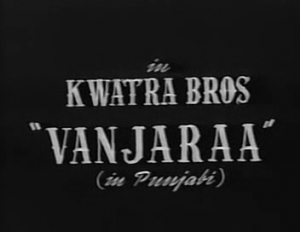 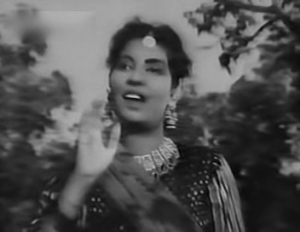 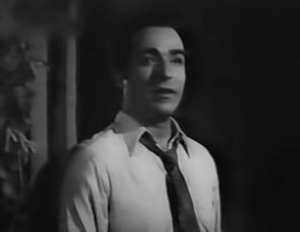 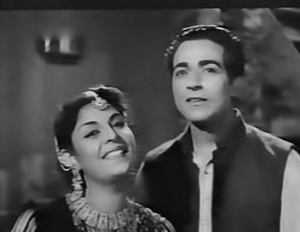 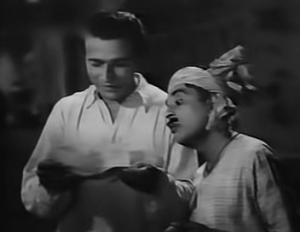 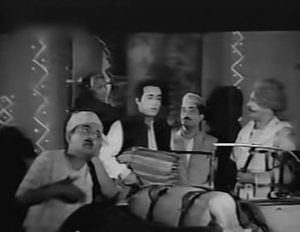 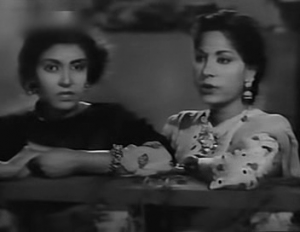 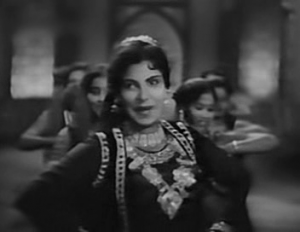 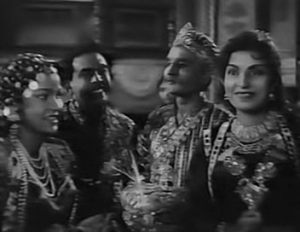 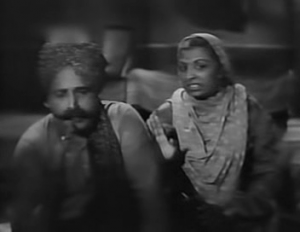 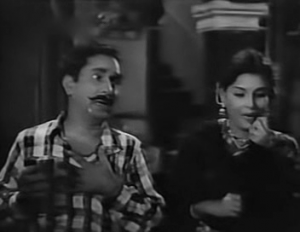 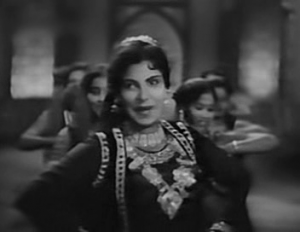 TECHNICAL SPEIFICATIONS:- Video Codec: XviD ISO MPEG-4 Video Bitrate: 786 kbps Video Resolution: 352x272 Video Aspect Ratio: 1.294:1 Frames Per Second: 25.000 Audio Codec: 0x2000 (Dolby AC3) AC3 Audio Bitrate: 224kb/s CBR 48000 Hz Audio Streams: 2 Audio Languages: Punjabi RunTime: 2:10:57 Subtitles: NONE Ripped by: Trinidad [DDR] Duration: 2:10:57 
Comments
No comments
|

 Hindi
Hindi